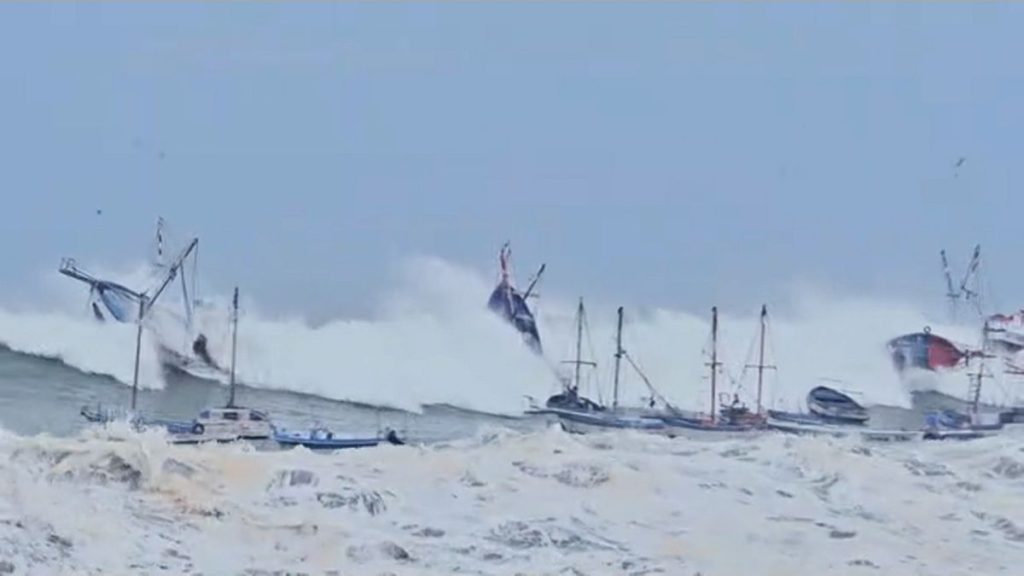The coastal regions of Peru experienced a significant maritime event over the weekend of December 27-28, 2024, characterized by unusually large swells that caused widespread disruption to fishing activities and coastal infrastructure. The anomalous wave activity, which commenced on Friday and persisted through Saturday, inflicted damage upon numerous fishing vessels, prompting authorities to close several ports along the Peruvian coastline. This precautionary measure aimed to safeguard both the fishing fleet and port facilities from the potentially destructive impact of the powerful waves. The disruption to maritime activities underscores the vulnerability of coastal communities to the unpredictable forces of nature and the economic consequences that can ensue from such events.
Beyond the immediate impact on the fishing industry, the unusual swell also necessitated the closure of beaches and recreational areas as a preventive measure. This decision, taken by Peruvian authorities, aimed to protect the public from the dangers posed by the strong waves and turbulent sea conditions. The closure of these public spaces highlights the broader implications of the maritime event, extending beyond the economic sphere to impact the social and recreational activities of coastal communities. The disruption to leisure activities underscores the wide-ranging effects of natural phenomena on coastal life.
The origin of the unusually large swells impacting the Peruvian coast is attributed to strong winds occurring off the US coastline. This meteorological phenomenon generated powerful waves that propagated across the Pacific Ocean, eventually reaching the shores of Peru. The trans-Pacific journey of these waves demonstrates the interconnectedness of global weather patterns and the far-reaching consequences of localized meteorological events. The identification of the source of the swell allows for a better understanding of the underlying causes of the coastal disruption in Peru and highlights the importance of meteorological monitoring and forecasting for mitigating the impact of such events.
While the immediate impact of the unusual swell was significant, forecasts predict a gradual subsidence of the waves by January 1, 2025. This anticipated return to normal sea conditions offers a degree of relief to affected coastal communities and industries. The projected timeline for the abatement of the swell provides a basis for planning recovery efforts and assessing the extent of the damage caused by the event. The anticipated normalization of wave activity signifies the temporary nature of the disruption and the resilience of coastal ecosystems in recovering from such disturbances.
The coastal event in Peru serves as a reminder of the susceptibility of coastal regions to the impacts of extreme weather and oceanographic phenomena. The incident underscores the necessity for robust coastal management strategies and preparedness measures to mitigate the potential consequences of such events. Effective monitoring systems, early warning mechanisms, and resilient infrastructure are crucial for minimizing the disruption caused by natural hazards and protecting the livelihoods and well-being of coastal populations. The experience in Peru highlights the importance of investing in coastal resilience and adapting to the changing dynamics of the marine environment.
Furthermore, the event highlights the interconnectedness of global weather systems and the far-reaching consequences of distant meteorological events. The origin of the swell off the US coast demonstrates how localized weather patterns can generate impacts across vast distances, affecting communities in geographically disparate regions. This underscores the importance of international cooperation in monitoring and forecasting weather phenomena and developing strategies for mitigating the transboundary effects of extreme weather events. The incident in Peru emphasizes the global nature of coastal hazards and the need for collaborative approaches to address the challenges posed by a changing climate and increasingly volatile ocean conditions.














